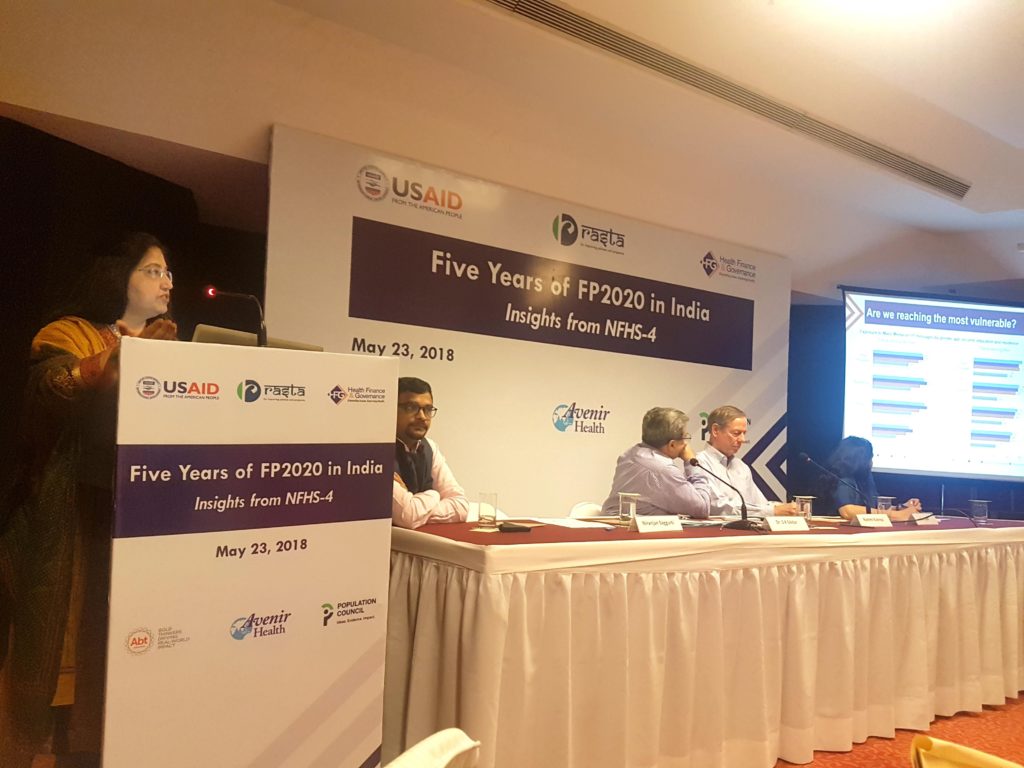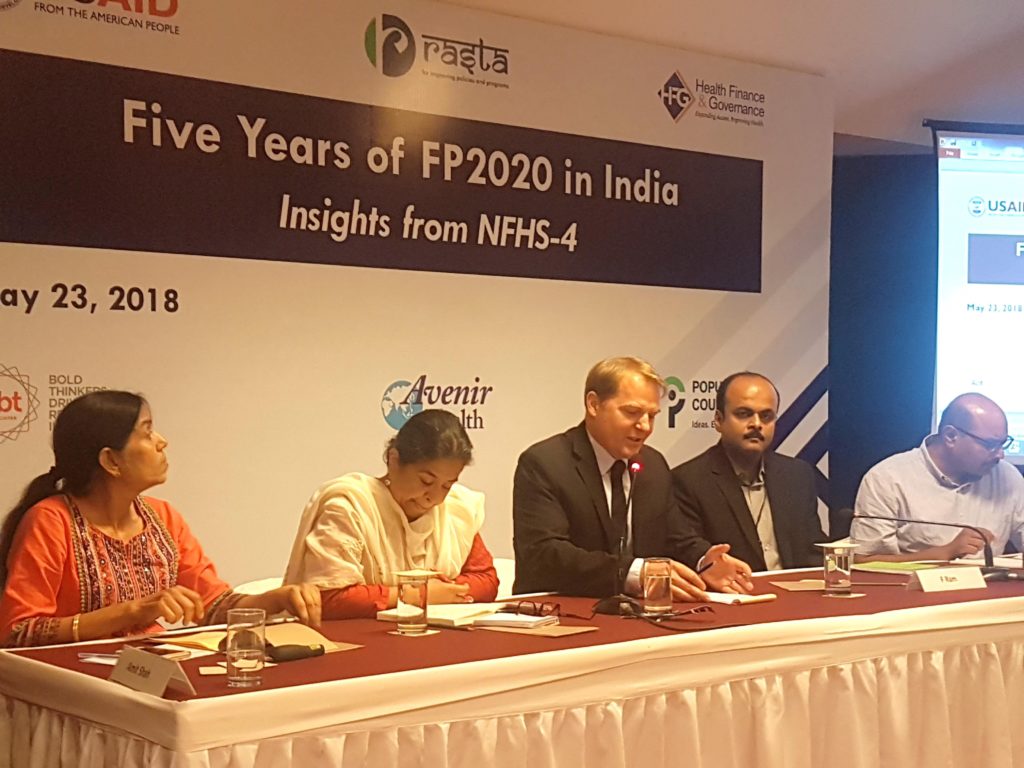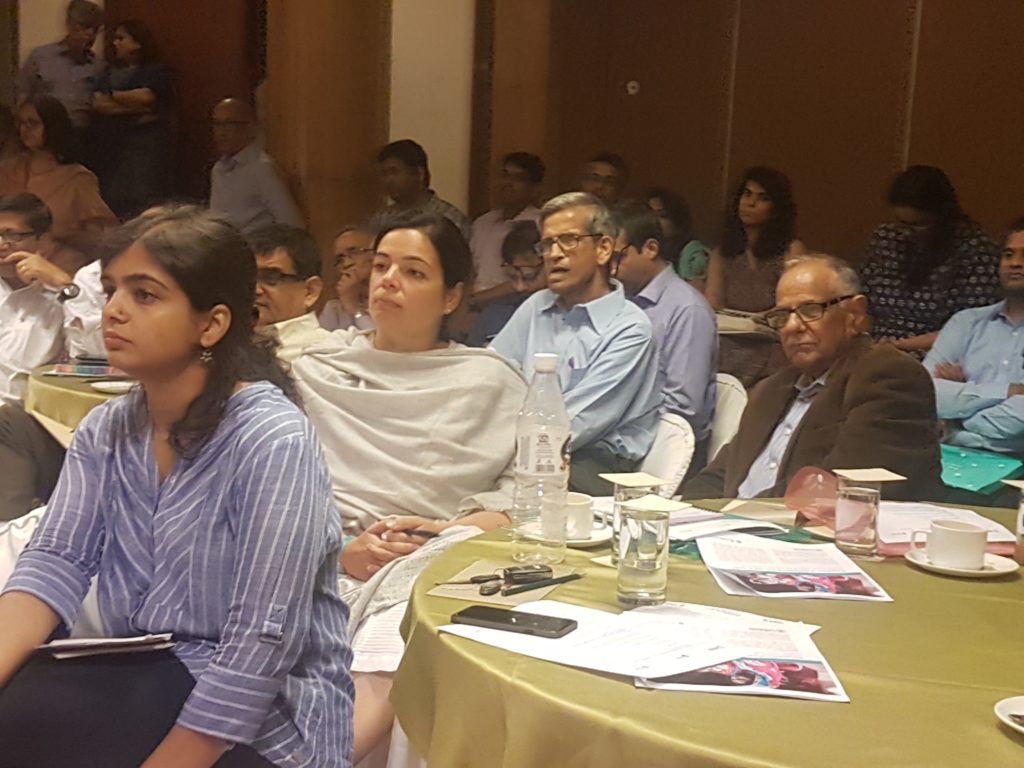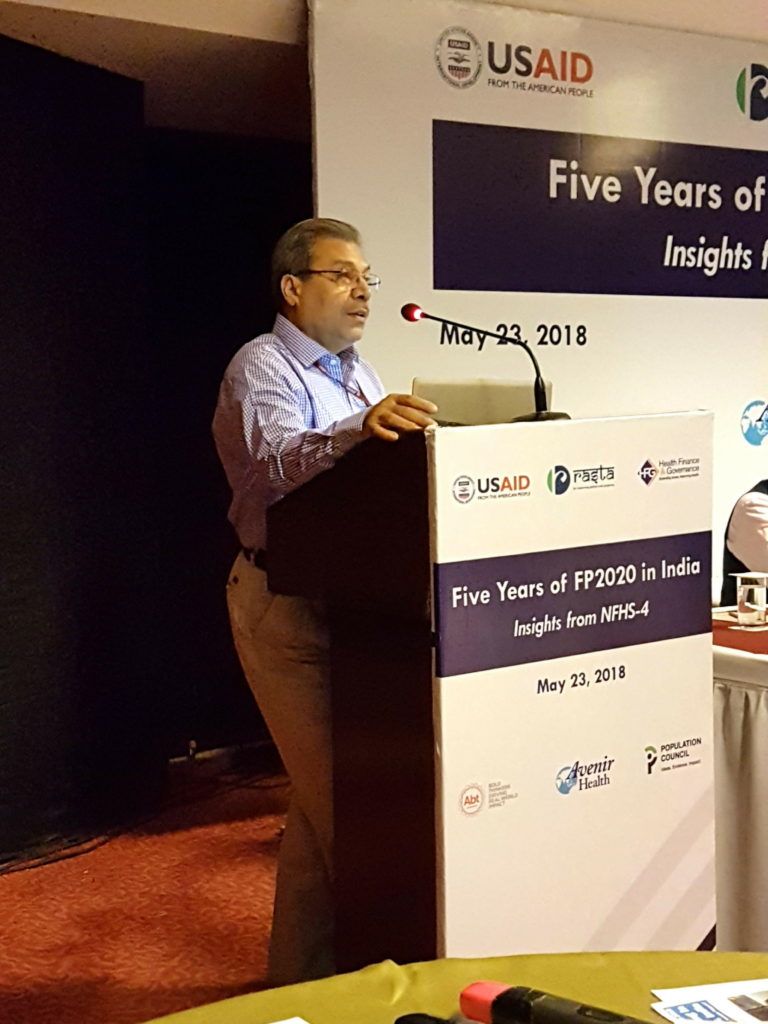HFG disseminates research findings at multi-stakeholder consultation on India’s FP2020 journey
Categories: Announcements, Maternal, Neonatal and Child Health (MNCH), Where We Work
As India strives to deliver on its Family Planning 2020 (FP2020) commitment, the need for data-driven family planning programming is critical. The Health Finance and Governance (HFG) India program has helped address this need by analyzing data to build a large body of evidence on fertility trends in the country. The project’s sustained research focus on this front has helped identify key areas for programmatic shift and the opportunities therein.

Dr. Rashmi Kukreja, Deputy Chief of Party – HFG India, presents HFG study findings
HFG presented the findings of its studies on fertility transition in India at a multi-stakeholder consultative meeting it co-hosted with the Population Council’s Rasta initiative, a USAID-supported initiative to which HFG will transition its evidence-building role. Attendees at the May 23 meeting, held in New Delhi, were senior leadership from the Ministry of Health and Family Welfare (MoHFW), Government of India; representatives from USAID/India, other major family planning donors including the Bill and Melinda Gates Foundation and Packard Foundation, the United Nations, development partners, implementing agencies, demographers, and domain experts.
Entitled Five Years of FP2020 in India – Insights from NFHS-4, the meeting focused on India’s priorities for FP2020, based on findings of the National Family Health Survey 2015-2016 (NFHS-4); NFHS-4 is the latest round of the large-scale, multi-round survey conducted with representative households throughout India. USAID has been part of the NFHS journey since its inception in 1992, and places value on the vast data it provides. Representing USAID at the consultative meet, Dr. Amit Shah, Technical Lead, Family Health, USAID/India, called the NFHS “a goldmine of information that provides vast public health data to inform policy measures and programmatic efforts.”
Among the most discussed findings of NFHS-4 is the decline in India’s total fertility rate (TFR) from 2.7 in 2005-2006 (NFHS-3) to 2.2 in 2015-2016 (NFHS-4) despite the modern contraceptive usage rate (mCPR) remaining stagnant at about 48 percent. The curious decline in TFR despite low contraceptive usage was the subject of an HFG study exploring non-contraceptive determinants of fertility. Another of HFG’s research efforts focused on analyzing family planning uptake among young and early parity woman in 146 high-priority districts in the states of Bihar, Madhya Pradesh, Rajasthan, and Uttar Pradesh. The third HFG study assessed the reach of various communication channels providing family planning information, with findings disaggregated by age, income, education, and residence. HFG conducted these studies together with its global project partner Avenir Health. The consultation meeting provided a vital platform through which HFG disseminated the findings of its research and engaged government and major family planning sector partners in discussion on what the findings meant for India’s FP2020 aims.

Development partners discuss India’s family planning programming needs
Dr. Rashmi Kukreja, Deputy Chief of Party HFG India, presented the major findings of HFG’s study on the high-priority districts in the four states, calling attention to the need for reaching the most vulnerable. The HFG-Avenir Health team presented findings of the exploration of reasons for India’s fertility decline. Presentations by other development partners and ensuing discussions focused on where India stands on family planning programming and what the path toward FP2020 demands, the adequacy of current data systems to provide evidence for policy development, and perspectives from development partners on where India is doing well and where it must sharpen focus. The large participation at the meeting – which had more than 80 attendees – and the engaged discussions attested to the sector’s keen interest in the recently released NFHS-4 data and the survey’s analysis and programmatic implications.

Meeting participants listen attentively to presentations and discussion
Importantly, the Government of India demonstrated strong interest in the research presented. Dr. S.K. Sikdar, MoHFW Deputy Commissioner for Family Planning, participated in discussions throughout the day. Highlighting the importance of data to take the family planning program forward, Dr. Sikdar thanked the attendees and proposed “continued discussions with the ministry, especially on convergence of adolescent health, sexual and reproductive health, and family planning efforts.” He also expressed hope that the forthcoming NFHS-5 (2018-2019) would be path breaking in terms of the data and results it provides.

Dr. S.K. Sikdar, MoHFW Deputy Commissioner for Family Planning, addresses meeting participants
The key policy takeaways that emerged from the consultative meeting were:
- There should be stronger focus on the family planning services needed by young and adolescent populations (15–24 years).
- In view of the high unmet need and low mCPR among early parity groups, postpartum family planning services should be strengthened.
- Health worker interaction with the target population is very low and the quality of counselling they offer needs to be improved.
- Method mix expansion should be scaled up across public sector facilities, along with community-based promotion to improve acceptance and uptake. The recent launch of new spacing contraceptives in India provides a unique opportunity to expand the method mix.
- In addition to new users, the program should also track past users and tackle discontinuation rates to reduce the ‘leaking bucket impact.



